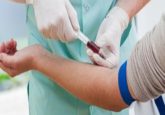Preventing unnecessary breast cancer treatment: an interview with Jelle Wesseling

Ductal carcinoma in situ (DCIS) is a condition that can sometimes develop into breast cancer. Each year it affects more than 6300 women in the UK, and thousands more worldwide. But right now, doctors can’t tell whether women with DCIS will go on to develop breast cancer. This means that, unfortunately, some women with DCIS undergo hospital visits, surgery and even chemotherapy and radiotherapy that they don’t need, while also causing them unnecessary stress and anxiety. Jelle Wesseling from the Netherlands Cancer Institute – Antoni van Leeuwenhoek Hospital (NKI-AVL) and his team of scientists from the UK, Netherlands and the US want to change this, and stop women getting treatment they won’t benefit from.
You recently won the CRUK Grand Challenge competition, designed to answer the biggest questions in cancer research. Can you tell us what winning this competition meant to you and your team?
Winning the Grand Challenge Award funded by Cancer Research UK and KWF Dutch Cancer Society allows us to accomplish our mission which is ultimately to make overtreatment of Ductal Carcinoma In Situ (DCIS) a thing of the past in order to save thousands of women annually from the burden of needless treatment. Our initiative ‘PRECISION’ (PREvent ductal Carcinoma In Situ Invasive Overtreatment Now) requires a global-major multidisciplinary investment. Winning the award stimulated me to build a team of the best individuals in the world with the relevant expertise, e.g. surgeons, radiologists, pathologists, molecular biologists etc., to reach our target. The patient representatives in the team play a very central role, they keep us focused on our key goal in a way that will make a difference to women with DCIS.
Would you like insider details on the other CRUK Grand Challenge projects?
- Cancer Research UK announces Grand Challenge winners
- Creating virtual reality maps of tumours: interview with Greg Hannon
- Developing a ‘Google Earth’ for tumors
- Uncovering the genetics of cancer – interview with Peter Campbell
Your Grand Challenge project focuses preventing unnecessary breast cancer treatment. Could you give us a brief overview of this project?
We want to save thousands of women annually from needless and burdensome treatment, without compromising the excellent outcomes of DCIS management presently achieved. We know that DCIS, which is considered as a potential precursor of breast cancer is detected much more frequently since the implementation of population-based screening for breast cancer. Strikingly, this has not been paralleled by a decline in more advanced stages of breast cancer. This suggests that over diagnosis and hence overtreatment exists. We therefore need to understand which DCIS lesions will progress to breast cancer and which ones never will. In other words, we need to understand the biology of DCIS initiation and progression. Thus far, this knowledge is lacking because little is known about the natural course of most lesions, as almost all women with a DCIS diagnosis receive breast amputation or breast-conserving surgery, often followed by radiotherapy. To find out what determines initiation and progression of DCIS, a multidisciplinary-global approach is needed.
- Related peer-reviewed content: Ductal carcinoma in situ: how should we treat it?
What methods are you utilizing to distinguish between women with DCIS who should be treated and those who can safely avoid treatment?
Our initiative is arranged in seven work packages which are partially interdependent:
i. We will collect and combine data and samples from over 20,000 women with a primary diagnosis of DCIS from the Netherlands, the UK and the US. We know which women developed invasive breast cancer and which ones did not. These two groups can be compared with each other from different angles as described below. Therefore, data needs to be harmonized in many ways e.g. what are the definitions that we use for DCIS grading? What variables will be imported into the shared database? How will the forms to enter the data look like? Within these huge series, we will conduct various analyses to search for features that may predict the course of a particular DCIS lesion and its risk of progression to invasive disease including clinical features (age, menopausal status, BMI, etc.) and pathological attributes (subtype, grade, stromal changes, etc.)
ii. We will conduct comprehensive genomic profiling at the DNA level.
iii. We will assess the variation in cells within a particular DCIS lesion in relation to risk of progression to invasive disease and do likewise for the relationship between immune response in the microenvironment.
iv. We will extract imaging features of screen-detected calcifications on digital mammography by deep-machine learning to distinguish calcifications associated with high from low-risk DCIS on one hand, but also to distinguish DCIS-associated calcifications from e.g. those associated with benign breast disease. This ultimately will be essential to prevent unnecessary referral or even treatment of women to the hospital because of harmless breast abnormalities associated with screen-detected calcifications.
v. We will validate factors that can explain the switch from DCIS to invasive breast cancer in the lab. For example, we are able to inject DCIS-cells into the nipple of mice and study how, when and why some will become invasive and others will not.
vi. We aim to integrate all the results into a ‘predictor’ able to estimate the risk of progression to invasive disease.
vii. We have aligned three independent randomized clinical trials (US: COMET; UK: LORIS; Netherlands: LORD) in which the safety of active surveillance for lower grade DCIS, as detected due to calcifications found by screening will be tested. Data and samples from these trials will be used to validate findings from the other work packages.
What are your long terms goals for the application of this project?
We would like to make overtreatment of DCIS a thing of the past. Hopefully, patients, health care providers and society as a whole will start to realize and comprehend that early detection is not always better, as it may turn women needlessly into patients with all the side effects associated with treatment. To reach our goal, it is crucial to understand the true nature of each DCIS lesion to distinguish the harmless from the potentially hazardous ones.
Over the next 10 years what changes would you like to see in the field of breast cancer research?
I look forward to a substantially improved and accurate prediction of outcomes. What are the quantified risks? How can we communicate this effectively to health care professionals and society? Achieving this may help us to ‘downplay’ the anxiety and worries often elicited after a diagnosis of DCIS. This together with preventing overtreatment will substantially contribute to preserving quality of life for thousands of women each year.
Profile: Jelle Wesseling is consultant breast pathologist. His research focuses on optimizing personalized diagnosis and treatment of each woman that is confronted with a diagnosis of breast cancer or a breast cancer risk lesions. Therefore, he searches for novel prognostic and predictive biomarkers using a combination of pathology, molecular analyses, and epidemiology. Ultimately, he aims at answering the question which woman will benefit from what type of treatment, thereby sparing many women pointless treatment for very low risk lesions, but providing adequate and effective treatment for the women that really need it.




